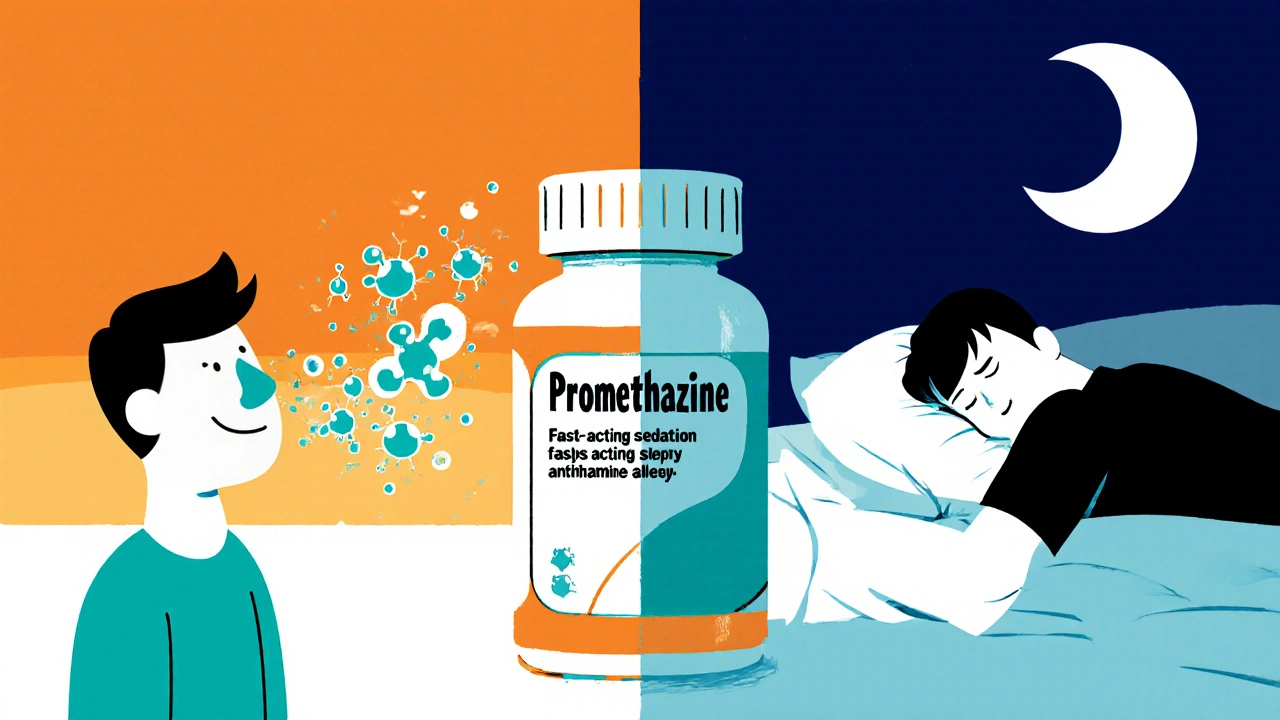Sedating Antihistamine Overview
When working with sedating antihistamine, a type of antihistamine that easily crosses the blood‑brain barrier and induces drowsiness. Also known as sleep‑inducing antihistamine, it is commonly used to relieve allergy symptoms, control motion‑sickness, and help with occasional insomnia. Understanding the sedating antihistamine landscape helps you pick the right product for your needs and avoid unwanted side effects.
Key Players in the Sedating Antihistamine Group
One of the most recognizable names is diphenhydramine, an over‑the‑counter option found in brands like Benadryl. It blocks H1 receptors in the brain, which is why you feel sleepy after a dose. Another widely used agent is doxylamine, the nighttime ingredient in many sleep aids and some cold medicines. Doxylamine tends to be slightly more sedating than diphenhydramine, making it a go‑to for people who need strong sleep support.
For prescription‑only options, hydroxyzine, a doctor‑prescribed antihistamine that also reduces anxiety is popular. Its dual action on anxiety and allergies makes it useful for patients with both issues. Finally, meclizine, an antihistamine favored for motion‑sickness relief sits in the middle of the sedating spectrum—enough drowsiness to calm the stomach but often less than diphenhydramine.
All these drugs share the same core attribute: they antagonize the H1 histamine receptor in the central nervous system. This action creates the classic triad of relief from itching, sneezing, and runny nose, while also pulling the sleep switch in the brain. Because they cross the BBB, they also affect alertness, reaction time, and coordination, which means you need to be careful when driving or operating machinery.
Safety is a huge part of the conversation. Sedating antihistamines can interact with alcohol, CNS depressants, and certain antidepressants, amplifying drowsiness. The elderly are especially sensitive, often experiencing confusion or falls. Our collection includes a comparison of Meclizine vs alternatives, showing how that specific drug stacks up against non‑sedating options like cetirizine or loratadine. Similarly, articles on generic Claritin and Zyrtec illustrate why some people switch to non‑sedating antihistamines to stay awake during the day.
Beyond safety, cost and accessibility matter. Over‑the‑counter choices such as diphenhydramine and doxylamine are usually cheap and easy to find, while prescription drugs like hydroxyzine may require insurance approval but often provide a smoother side‑effect profile. When you compare effectiveness, you’ll see that diphenhydramine works well for acute allergy flare‑ups, doxylamine shines for night‑time sleep aid, hydroxyzine is a solid all‑rounder for anxiety‑related itching, and meclizine is the travel‑friendly option for motion‑related nausea.
Now that you’ve got a solid grasp of what sedating antihistamines are, how they differ, and what to watch out for, you’re ready to explore the detailed articles below. From side‑by‑side drug comparisons to safety checklists, the posts ahead give you practical tips to make an informed choice for your next purchase or prescription.

